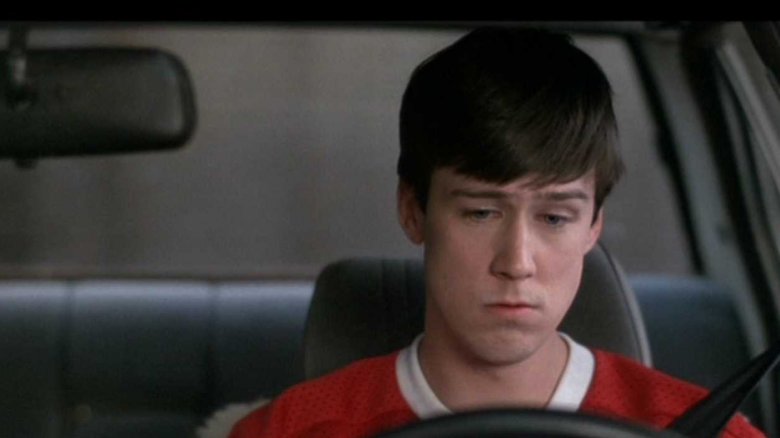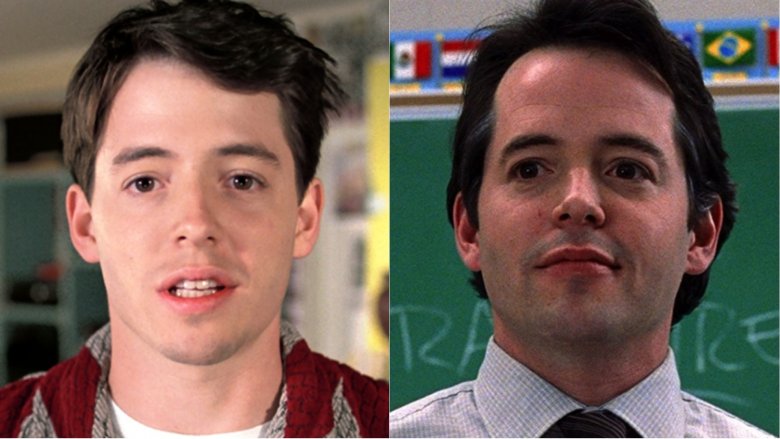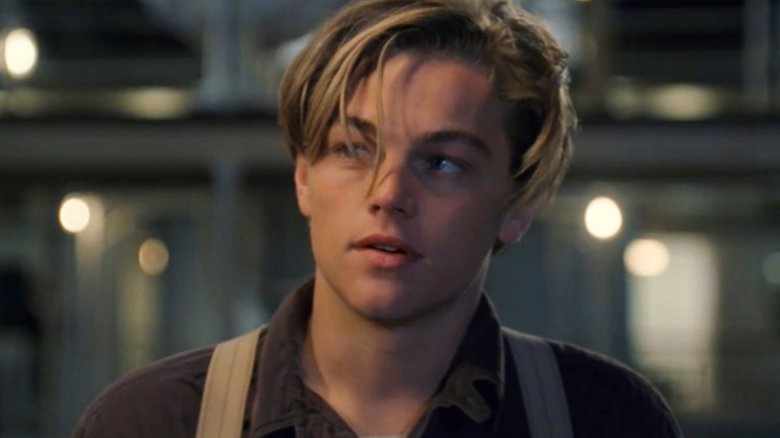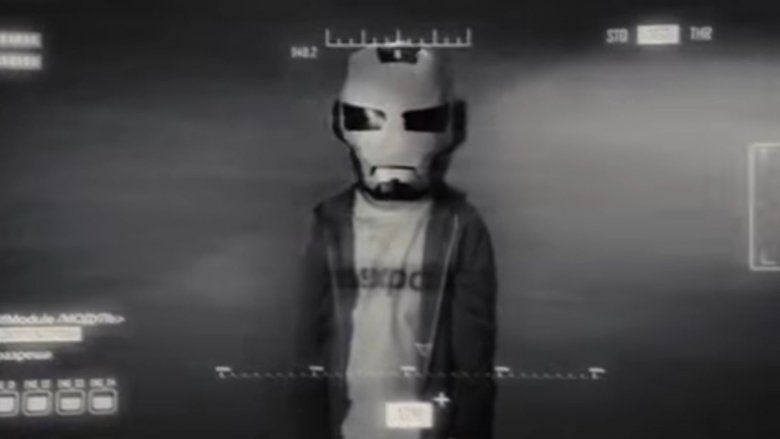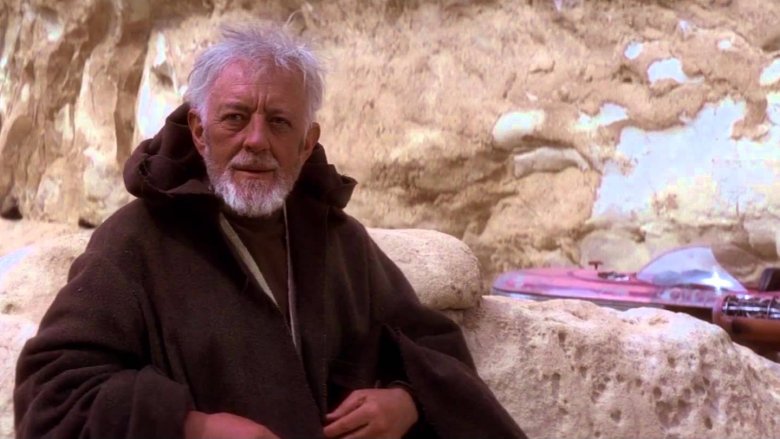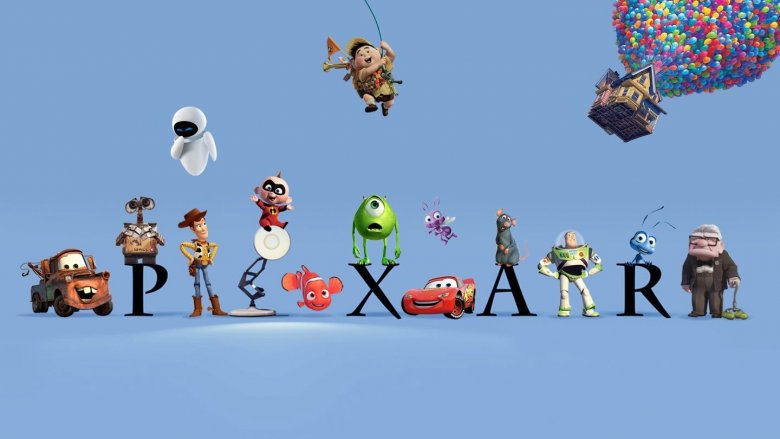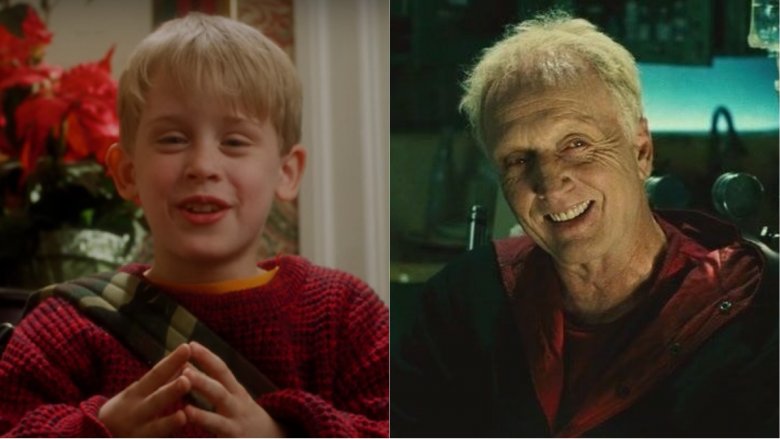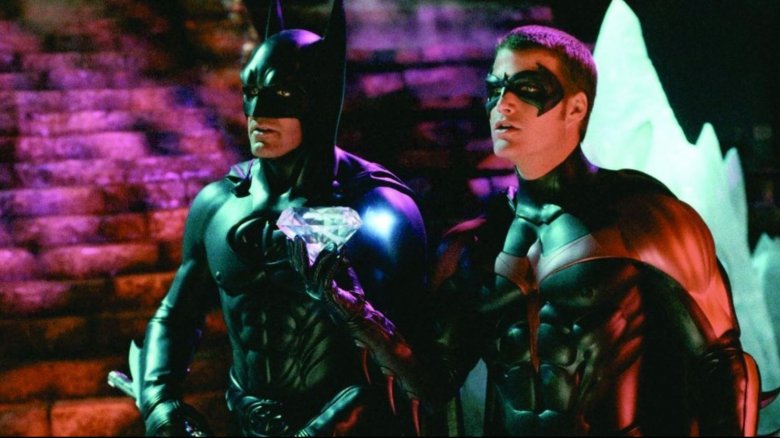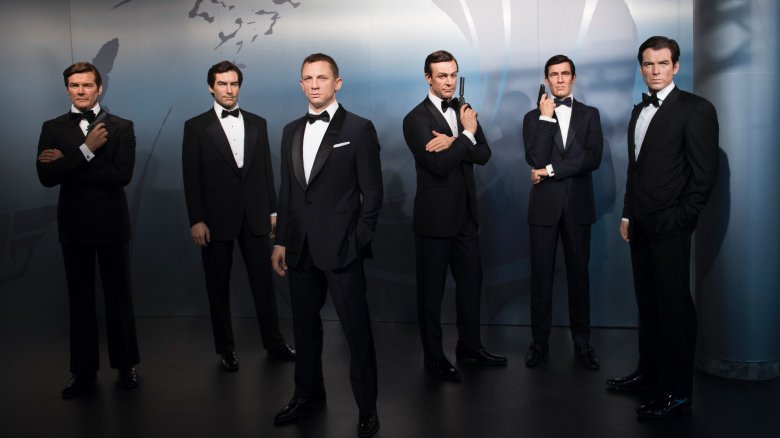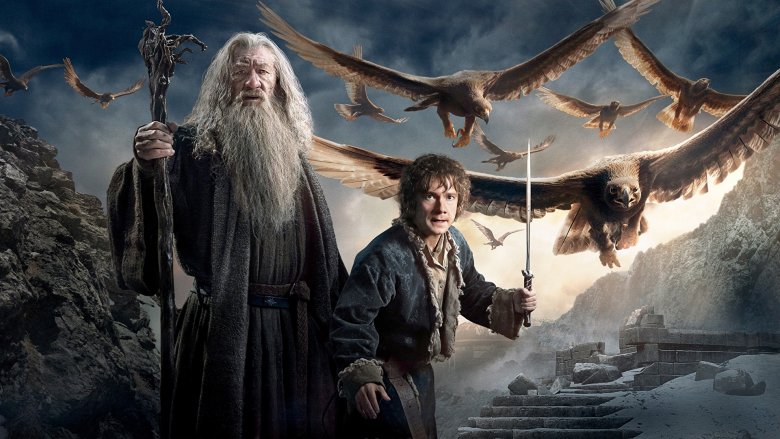Insane Movie Theories That Might Actually Be True
Everyone loves a great plot twist, and maybe that's why the internet has invented so many outlandish fan theories about the movies we love. Sometimes, these theories don't hold water. But there are also times when a theory is so brilliant, so consistent, and so logically cohesive that you almost wonder if it's what the filmmakers intended from the start. Either way, here are some of the best.
Ferris Bueller's Day Off: Ferris is a figment of Cameron's imagination
Sure, Ferris Bueller pulls off some crazy hijinks, and sure, the movie is named after him. But if you really think about it, the emotional core of this classic '80s flick is not Ferris, but Cameron, his self-loathing and fussy best friend. While Ferris is the same brat from start to finish, Cameron begins the movie agonizing beneath the pressure of a controlling father. At the end, his character arc comes full circle when he lets go, gets angry, and busts up his dad's prized Ferrari.
Once you accept that Cameron is the actual protagonist, The Atlantic argues that it's now time to splice in the Fight Club twist. Yeah, that's right: Ferris is Cameron's imaginary friend. He's an external hallucinatory embodiment of who Cameron wants to be, what he wants to look like, how he wants to act. It sound crazy, but viewing the movie with this twist in mind brings new depth to the story. Now, instead of just being a jerk teenager, Ferris' rebellious actions can be reframed as being the silly grand schemes of a repressed, overprotected kid dying to climb out of his shell, wishing for a more exciting life.
Either way, once you have this theory in mind, you'll never hear Ferris' say "Are you suggesting I'm not who I say I am?" the same way ever again.
Election (1999) is a secret sequel to Ferris Bueller's Day Off
If the "Imaginary Ferris" theory isn't your cup of tea, here's an alternative take. Presuming Ferris is a real kid, what sort of adult does he grow up to be? According to a theory described by WhatCulture, the answer lies in Alexander Payne's 1999 black comedy, Election.
If you haven't seen it, it stars Matthew Broderick as a bitter high school teacher trying to stop an ambitious student, Tracy Flick, from getting elected student body president. If Broderick's character in Election is any indication, Ferris grows up to become everything he hated. His youthful vigor has given way to resentment, insecurity, and regret. Perhaps that's exactly why he goes to such extreme lengths to take down Tracy Flick, because on some level, her ambition reminds him of the kid he used to be ... and a past he can never go back to.
Sure, Broderick's character isn't named Ferris, but let's presume he changed it somewhere along the line, maybe as a way of distancing himself from his childhood. Either way, the two movies work surprisingly well together, and this theory has many fans. Perhaps the most notable believer is director Jason Reitman (Juno). In 2010, Reitman screened both films together for an audience, according to IndieWire, reiterating his opinion that Election is an "unofficial sequel."
Titanic: Jack Dawson is a time traveler
Rose, go with Jack if you want to live. This theory, described on CinemaBlend, argues that Jack Dawson, the American heartthrob played by Leonard DiCaprio, is actually a time traveler from the future who has jumped back to the year 1912 on a desperate suicide mission. His goal? Depending whom you ask, he's either there to protect Rose or to make sure the Titanic sinks, thus preventing the timeline from getting all screwy. Either way, this twist turns Titanic into a science fiction film, thereby allowing it to snuggle in more comfortably with the rest of James Cameron's filmography.
Need evidence? Okay. The key factor here is that Jack, unlike everyone around him, keeps spouting anachronisms. For one, Jack's haircut and rucksack are both from the wrong eras. Then, he promises to take Rose to the roller coaster at the Santa Monica pier. Bad move, Jack: That roller coaster won't be built until 1916, according to WestlandTraveler. Oops. He also claims to have gone fishing on manmade Lake Wissota, which would be pretty hard to do since it didn't exist until 1917, according to the Chicago Tribune. C'mon, Jack, get your dates straight! Despite all these slip-ups, Jack does seem to succeed in his mission. Lucky thing they didn't have the internet back then, or someone probably would've fact-checked him.
Iron Man 2: Peter Parker is the little kid in the Iron Man mask
Spider-Man didn't officially enter the Marvel Cinematic Universe until 2016, but Peter Parker must have been around before that, right? Now, if you remember Iron Man 2, the whole plot revolves around the Stark Expo, a giant science exposition taking place in Queens, New York. Peter would've been a wide-eyed, science-crazed little kid at that point, and considering that Queens is his neighborhood, you just know that he must've been begging Aunt May and Uncle Ben to let him go.
Well, there's a popular internet theory that not only was Peter there, but we saw him. See, in Iron Man 2's climax, the Expo gets attacked by killer robots. Suddenly, this brave kid wearing an Iron Man mask confronts one of the robots before being rescued by the real Iron Man, who tells him, "Nice work, kid."
So, was it Peter? Did this encounter help inspire him to one day become a superhero? The movies haven't referenced this moment yet, but this theory is only inches away from being confirmed as canon. In an interview with Huffington Post, Spider-Man actor Tom Holland not only agreed with the theory, but claimed that he'd "literally had a conversation with Kevin Feige only 20 minutes ago," where the Marvel producer had confirmed the theory as well. Still, we're waiting for an official flashback scene.
Star Wars: Obi-Wan is the master planner
Some movie theories go off in crazy directions, but Emily Asher-Perrin's "Obi-Wan" theory on Tor.com is so brilliantly logical that it's almost impossible to argue with. It finally answers the biggest quandary in Star Wars history: Why did Ben lie to Luke about his father? As Asher-Perrin explains, what appear to be numerous coincidences and white lies on Obi-Wan's part are actually a deliberate scheme to transform Anakin Skywalker's son into a "Jedi hit man," who can mercilessly take out Darth Vader and the Emperor.
When viewed through this lens, all of Obi-Wan's "coincidental" actions make sense. For one, why does Ben hang out on Tatooine for decades, only to conveniently emerge just in time to save Luke's life? Because he knows such heroics will make a grand impression on the boy, that's why. Obi-Wan then tells Luke what an amazing Jedi his father was, and (gasp!) gives the kid his dad's old lightsaber. This theory also explains why Obi-Wan sacrifices himself to Vader: He deliberately becomes a martyr, hoping to cement Luke's hatred for the Sith lord. Plus, it explains why Force Ghost Obi-Wan doesn't want Luke to go save everyone on Cloud City. He's scared that if Luke finds out about his parentage, he'll develop an emotional attachment to Vader that could undermine the rebellion. Obi-Wan wants Luke to kill Vader, not redeem him.
Instead, Luke surpasses his training, using both compassion and bravery to both topple the empire and save his father's soul. Nice job, kid.
All Pixar movies take place in the same universe
What if every Pixar movie takes place in the same universe? While the links aren't anywhere near as cohesive or noticeable as the Marvel Cinematic Universe, there are enough Easter eggs between the films to suggest that when it comes to Pixar, it's all connected. Mega-fan Jon Negroni has built a website digging into the links.
To briefly summarize, the Pixar universe begins with The Good Dinosaur millions of years ago, then jumps to Brave set in the 14th century. It then moves up to the 20th/21st centuries, where the majority of Pixar movies are set — yes, this is where you find Finding Nemo, Toy Story, The Incredibles, and so on. Now, this is where things get weird. When you flash forward to the 2100s, the Earth has become uninhabitable, which is why it gets populated with artificial intelligence instead of humans — hello, Cars — as the humans go off into space (Wall-E). The plant seen in Wall-E becomes a full-grown tree in A Bug's Life, meaning the insect adventure takes place around the year 3000, not the present day. Monsters, Inc. then takes place around the year 5000, well after humans have gone extinct. How? Because the monsters use time travel to interact with humans.
If all this sounds far-fetched, well, here's a newsflash: Disney may be onboard with it. In 2017, according to NBC News, Disney/Pixar released two videos pointing out all the connective tissue between the films, thus all-but-confirming the unified Pixar theory.
Home Alone: Kevin McAllister grows up to be Jigsaw
Yes, Kevin McAllister wants you to play a game. At first glance, the idea that the Home Alone protagonist could have such a devious future ahead of him sounds ridiculous. But this theory, first proposed on Grantland by Jason Concepcion, rings so creepily true that future home video releases of this family classic should probably be titled Saw 0: Little Jigsaw is Home Alone.
The central concept here is that Jigsaw's propensity for elaborate death traps began when he was a young boy named Kevin McAllister, designing the same kind of elaborate traps to prevent burglars from robbing his family home. Concepcion points out the creepy parallels between Kevin's traps and the ones later used by Jigsaw, particularly the fact that the traps are always triggered by the victims. There's even a clown mask in one scene, a rather eerie bit of "foreshadowing."
Not convinced? Well, Kevin's personality lines up with the future Jigsaw killer surprisingly well. Just like the Saw villain, Kevin is obsessed with the use of recorded video. Kevin also has an unhealthy fascination with his serial killer next-door neighbor, and exhibits noticeably sadistic tendencies in his desire to punish the home invaders in various brutal ways. Kevin's Home Alone inventions might've been played for laughs, but as pointed out by Dr. Ryan St. Clair in an interview with The Week, a real version of those traps would've caused serious medical conditions for the burglars. Creepy stuff.
The Schumacher Batman movies happen inside Tim Burton's Batman universe
Batman Forever and Batman & Robin might claim to be sequels to Tim Burton's Batman Returns, but are they? They sure don't seem like it. Even putting aside the tonal and musical differences, Bruce Wayne's physical appearance mutates overnight, transforming from the thin, edgy weirdo that Michael Keaton played into a more conventional, square-jawed hero. Burton's Gotham was an industrial wasteland, seemingly on the verge of economic collapse, with dusty, dated technology. Schumacher's Gotham, on the other hand, is a glowing neon city of the future, apparently in an economic boom. Weirdest of all, why does Harvey Dent's race change? Why does no one mention it? Shouldn't that be a bigger deal than his Two-Face scarring?
Here's the solution, according to Jon Negroni: The Schumacher films are fictional sci-fi movies made within the Burton universe, presumably some point after Michael Keaton's Bruce Wayne reveals his secret identity to the world. So Schumacher's glitzy, neon, heroic Gotham is just a "Hollywoodized" version of the grimy, "real" (Burton) world. That's why the city is suddenly so shiny and sanitized in Batman Forever. It's why the criminals are made to look ridiculous. It's why Bruce Wayne is portrayed by more conventionally handsome actors. As for Harvey Dent's race, well, that's another obnoxious case of Hollywood whitewashing. If this theory is true, then the Schumacher movies are just pro-Batman, pro-Gotham propaganda, which makes a lot more sense than whatever they really are.
James Bond: The Code Name Theory
Trudging through the continuity of the 007 movies is a slippery slope. That's why fans have long pondered whether "James Bond" is just a code name, used by multiple secret agents throughout the 20th century. This would explain why the character's face, age, and personality seem to change every decade. It would also explain why even when "James Bond" changes, other characters, like M, have remained the same.
This theory probably got started when George Lazenby broke the fourth wall, telling the audience, "This never happened to the other fella," according to DigitalSpy. However, it's generally believed that every 007 is brainwashed to believe that they are "James Bond," erasing their former identity. Die Another Day director Lee Tamahori lent his support to the theory, stating in an interview with About.com that, "My idea was basically that there have been several Bonds. It's just a prefix and a code name. Even James Bond is not the guy's name."
The only problem? Continuity issues, particularly related to Bond's dead wife. There's also Skyfall, the first movie to dip into Bond's origins. However, writer D.F. Lovett argues that Skyfall actually proves the code name hypothesis, particularly if you believe all Bonds get brainwashed and given a false back story. Lovett even suggests that Skyfall's villain, Raoul Silva, is actually a former James Bond, which is why he wants to strike back at the agency that abandoned him.
Prometheus: Jesus Christ was an alien Engineer
Most of these wild theories come from fans, but in this case, the source is the movie's own director. Whether you loved or hated Ridley Scott's Prometheus, there's no doubt that it was a far more ambitious film than people often give it credit for. While the Alien movies always focused on the creatures themselves, Prometheus instead pondered theology, philosophy, and mankind's role in the universe. The film not only reveals that the famous "Space Jockey" belongs to a race of towering humanoids known as the Engineers, but also establishes in the first scene that these Engineers are the creators of life on Earth. One question the movie leaves hanging is why the Engineers, after so lovingly creating us, now want to blow us to smithereens. What did we do to deserve that?
Well, in an interview with Movies.com, Scott dropped some heavy clues about why those Engineers hate us so much. Scott's idea was that the Engineers used to be guiding parental figures to humanity, until one of the Engineers came down to Earth during the days of the Roman empire. This Engineer — let's call him J.C. — tried to help out us misbehaving humans, to teach us the mysteries of the universe. We responded by crucifying him.
That's right, Jesus was a space jockey. Hey, that explains why the Engineers wear those biblical robes.
Lord of the Rings: Gandalf did plan on using the eagles
Peter Jackson's Lord of the Rings trilogy, like the books that inspired it, will go down in history as one of the most successful fantasy sagas of all time. Because fantasy worlds are so complex to build, we're usually willing to give a free pass to plot holes, though many Lord of the Rings fans have remarked that it's kinda weird that Frodo and his crew didn't ride those giant eagles into Mordor in the first place, especially considering Gandalf knew about them. If nothing else, it would've saved them a lot of walking.
Well, fan theory to the rescue! The popular explanation, described here on Nerdist, is that Gandalf was secretly planning to have the Fellowship rendezvous with the big eagles at their home in the Misty Mountains. Unfortunately, before they could make it there, he got taken down by that pesky Balrog. When Gandalf the Grey yells "Fly, you fools!" in his dying moment, he isn't telling his friends to run. He's desperately trying to communicate that they need to find the eagles, who will fly them to Mordor. Oops.
This theory is satisfying and ties up loose ends, though not everyone is so convinced. Lord of the Rings stars Elijah Wood and Sean Astin don't really buy it, as seen in an interview with Huffington Post. Astin even suggests the eagles were unable to fly into Mordor with Sauron in the picture.
